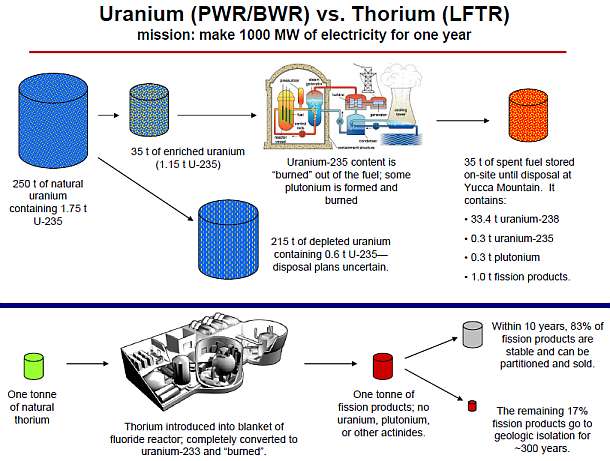UK’s Labour Censorship Initiative
As economic and cultural suicide stalk Western Europe, it has initiated efforts to hobble America's technological advantage and diminish our freedoms. The first documented attacks on our open dialogue came from the UK and began in 2018 when Morgan McGreevy, Keir Starmer’s chief of staff (then Labour Together’s managing director), began and funded an outfit called Stop Funding Fake News (SFFN). Recognizing that the online news purveyors could best be silenced by depriving them of funds, it first targeted UK outfits, but moved on in an attempt to starve U.S. outfits like American Thinker, Breitbart, Zero Hedge, and the Federalist of advertising revenue, and astroturfing defamation of such sites.
In June 2020, a booster of SFFN’s campaign tagged Ford’s UK twitter account, noting that its ads were appearing on Breitbart. Ford UK’s twitter account responded that it was “investigating the ad placement” and confirmed that Ford “does not share the views expressed on the website.” By 2021, SFFN expanded to target Breitbart’s YouTube account. “Breitbart, who have: consistently denied climate change, promoted sexism, published racist conspiracy theories have a monetised YouTube channel,” SFFN complained in July.
SFFN encouraged advertisers generally to block their ads from appearing on Breitbart’s YouTube content. In order to scale up its demonetization campaign, SFFN hosted an excel spreadsheet “blocklist” on its website for years. It listed the URLs of “fake news” websites that advertisers could import into their Google AdSense profiles to block sites en masse from receiving their advertising. This included Breitbart and a host of other alt-right and conservative U.S. sites such as Zero Hedge, The Federalist and American Thinker from 2020 onwards, alongside The Canary and Evolve Politics. SFFN also provided a handy “how-to” guide for advertisers and brands, walking them through how they could add SFFN’s targets to their own personalised blocklist. By December 2020, the list had expanded to include 28 sites, including two platforms linked to the far-right British agitator, Tommy Robinson, most notably Rebel News.
Another of SFFN’s initial targets was the right-wing UK website Westmonster, which had been set up and funded by Arron Banks, a controversial pro-Brexit campaigner. SFFN accused Westmonster of being a “propaganda channel” for the Brexit Party and its leader, Nigel Farage. The Brexit Party was renamed Reform UK. On current polling, Reform is set to form the next UK government with Farage as leader. SFFN claimed that Westmonster’s coverage of Farage and the Brexit Party was disproportionate. The campaign’s evidentiary threads included allusive imagery of Farage standing with Trump, accusing Trump of peddling “toxic post-truth politics.” In one remarkable thread from May 2019, SFFN urged readers not to vote for Brexit Party candidates in the UK’s upcoming European Parliament elections.
SFFN also accused Westmonster of fueling “anger & hatred” towards migrants by “publishing a stream of scare stories about immigrants in other European countries [which] deliberately create the impression of hordes of violent foreigners on the doorstep of Britain.” In April 2019, SFFN said Westmonster “stoke[d] fear of migrants” because it included stories about Channel Crossings -- journeys made by asylum seekers on make-shift boats across the English Channel to seek refuge in the UK.
EU’s DSA
In 2022, the European Union got into the muzzling act when its Parliament passed the infamous Digital Service Act. Noted liars Hillary Clinton and John F. Kerry endorsed this, urging the EU to force Elon Musk to censor us after he bought Twitter.
For years, some of us in the free speech community have warned about the threat of the European Union to free speech, particularly in the enactment of the infamous Digital Services Act (DSA). The EU has virtually declared war on free speech and is targeting American companies. That war just began with the first DSA fine. Not surprisingly, X was the chosen target -- a company blamed by many in the EU and the U.S. for rolling back free-speech protections.
This is not the first effort by the EU to deal with the challenges to their autocratic rule created by Elon Musk’s $44 billion dollar purchase of Twitter and making it the world’s most widely available free speech platform. During the last presidential election, the EU issued a formal letter to him demanding that he censor a Trump interview. More recently they offered Musk “an illegal secret deal” to quietly censor users’ speech.
He refused. “At the time, a person with knowledge of the issue told Pirate Wires the Commission wanted X to hire a team of people in the EU that could number in the hundreds to remove “misinformation” on the platform. X would have no recourse in these removal decisions. Now, one year later, the Commission has followed through with their threats, fining X $140 million (the first-ever penalty under their Digital Services Act).”
The EU preferred the pre-Musk Twitter, where only posters they favored got blue checks (wider reach and greater credibility) and they could shut up dissenters.
Response to the EU’s Outrageous Overreaching
France’s digital minister hailed the action, as did Germany’s digital minister. Not that they matter as much in the end as the responses of U.S. Administration officials and Congress to the EU’s demand for what Peter Hague correctly dubs “dragnet surveillance.” Vice-President JD Vance warned against using “censorship” to attack U.S. firms. He called it “A fine for not engaging in censorship,” adding, “The EU should be supporting free speech, not attacking American companies over garbage.” Secretary Marco Rubio fired “The European Commission’s $140 million fine isn’t just an attack on X, it’s an attack on all American tech platforms and the American people by foreign governments.” Howard Lutnick stated: “The digital services act is designed to stifle free speech and American tech companies. We have made our position clear to our counterparts in Europe.”
The U.S. has a number of diplomatic tools to counter the EU, U.S. pressure in trade talks and increased scrutiny of EU regulatory bias among them.
Congress has under consideration a GRANITE Act which would give us citizens who are targeted by the EU or UK with fines the right to countersue in U.S. courts.
The Administration is well aware of the European censorship drive and its consequences there. Last Month the U.S. government released a National Security Strategy paper which reports this about Europe:
American officials have become used to thinking about European problems in terms of insufficient military spending and economic stagnation. There is truth to this, but Europe’s real problems are even deeper.
Continental Europe has been losing share of global GDP -- down from 25 percent in 1990 to 14 percent today -- partly owing to national and transnational regulations that undermine creativity and industriousness.
But this economic decline is eclipsed by the real and more stark prospect of civilizational erasure. The larger issues facing Europe include activities of the European Union and other transnational bodies that undermine political liberty and sovereignty, migration policies that are transforming the continent and creating strife, censorship of free speech and suppression of political opposition, cratering birthrates, and loss of national identities and self-confidence.
Should present trends continue, the continent will be unrecognizable in 20 years or less. As such, it is far from obvious whether certain European countries will have economies and militaries strong enough to remain reliable allies. Many of these nations are currently doubling down on their present path. We want Europe to remain European, to regain its civilizational self-confidence, and to abandon its failed focus on regulatory suffocation.
Deputy Secretary of State Christopher Landau also notes the absurd contradictions of our role in NATO and the EU:
The US has long failed to address the glaring inconsistency between its relations with NATO and the EU. These are almost all the same countries in both organizations. When these countries wear their NATO hats, they insist that Transatlantic cooperation is the cornerstone of our mutual security. But when these countries wear their EU hats, they pursue all sorts of agendas that are often utterly adverse to US interests and security -- including censorship, economic suicide/climate fanaticism, open borders, disdain for national sovereignty/promotion of multilateral governance and taxation, support for Communist Cuba, etc etc. This inconsistency cannot continue. Either the great nations of Europe are our partners in protecting the Western civilization that we inherited from them or they are not. But we cannot pretend that we are partners while those nations allow the EU’s unelected, undemocratic, and unrepresentative bureaucracy in Brussels to pursue policies of civilizational suicide.
Short of voting to leave the EU, European citizens have no way to remove and replace the EU leaders who have driven this to a crisis, but the Streisand effect seems to be at play. Since the fine was announced, X reportedly has become the number 1 news app in France, Austria, Belgium, Portugal, Estonia, Slovakia, Malta, Lithuania, Luxembourg, Latvia, Croatia, Bulgaria, and Slovenia.
https://www.americanthinker.com/articles/2025/12/the_eu_us_battle_line.html







